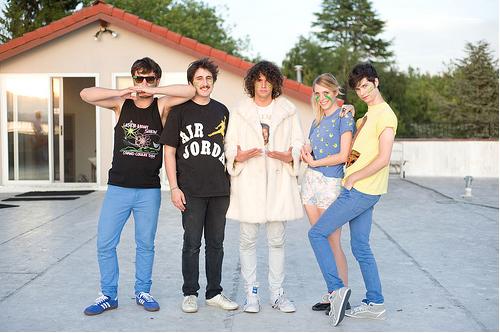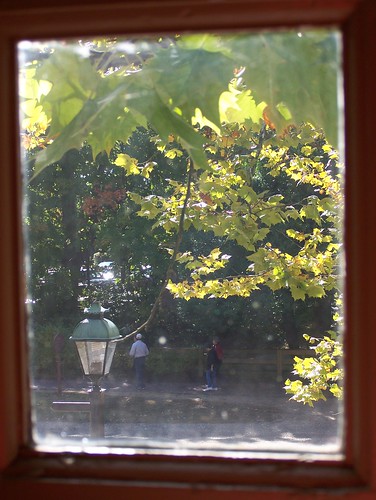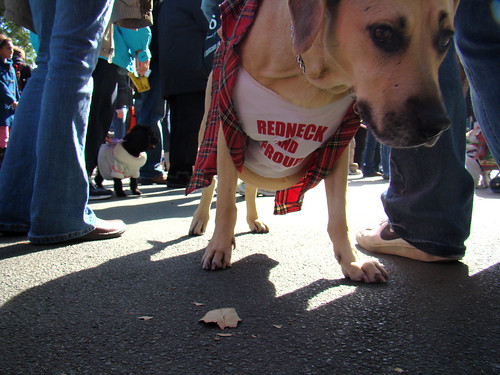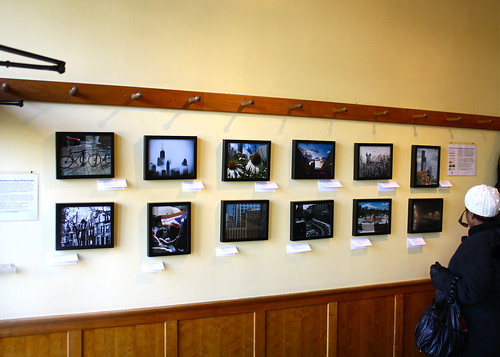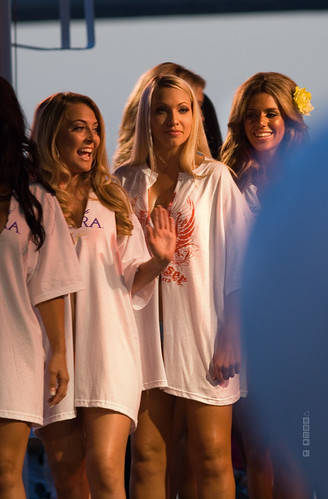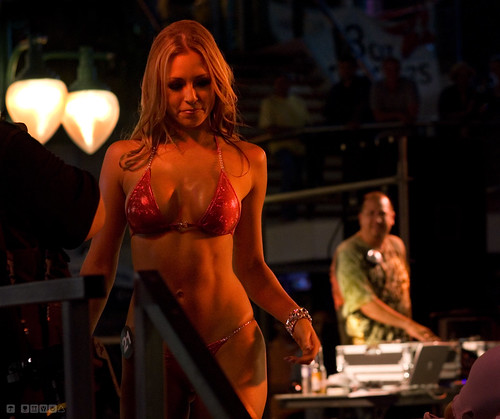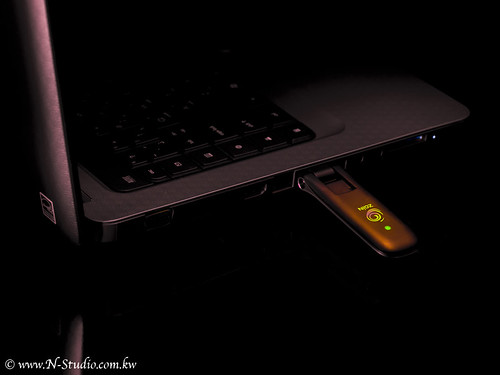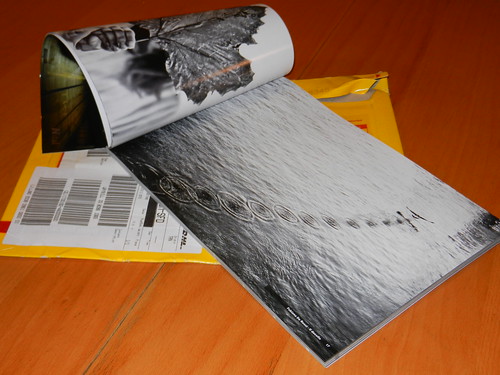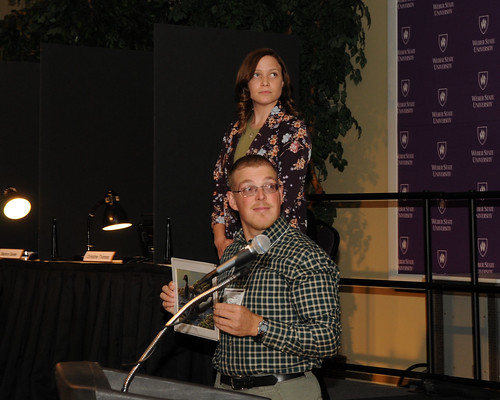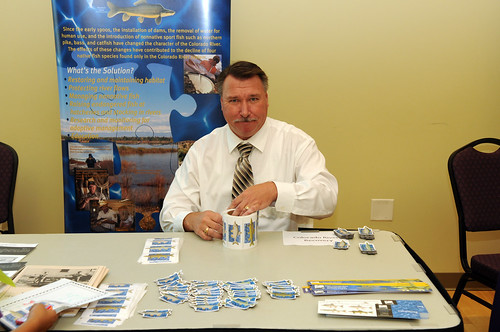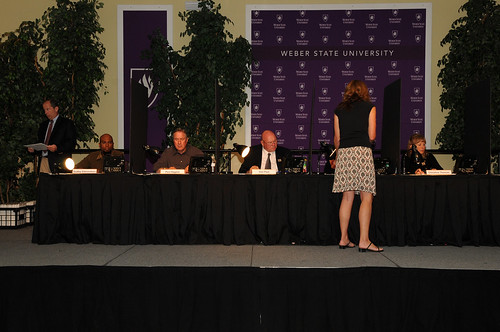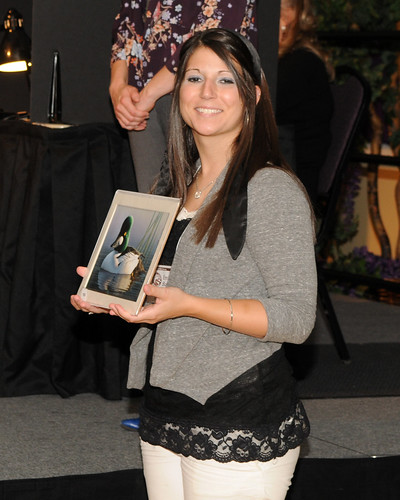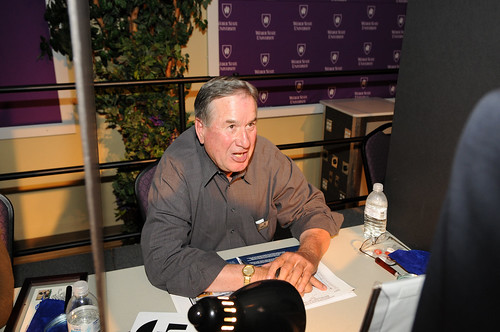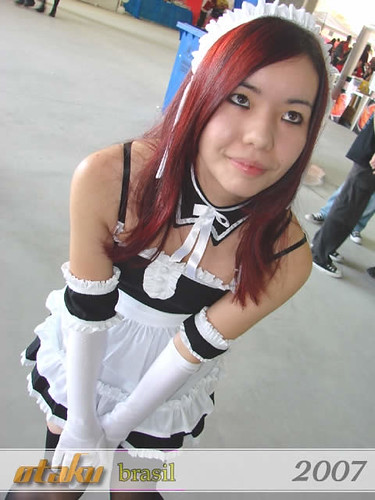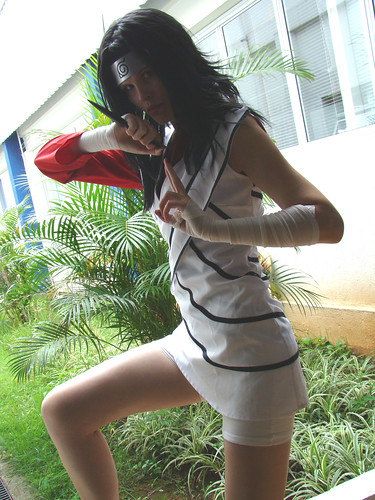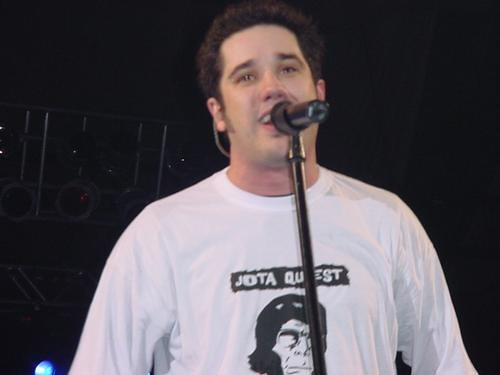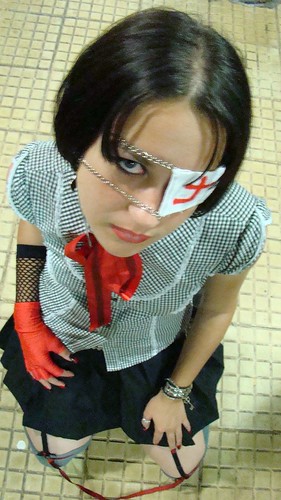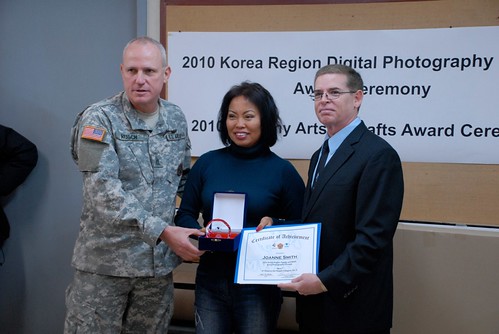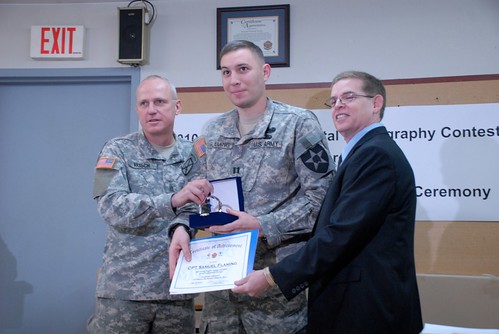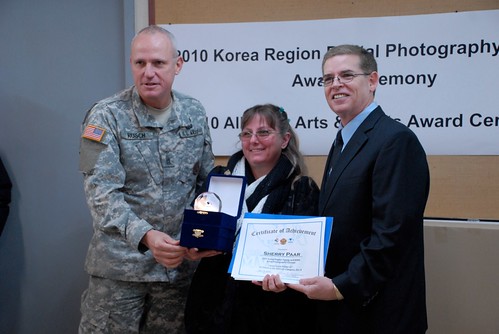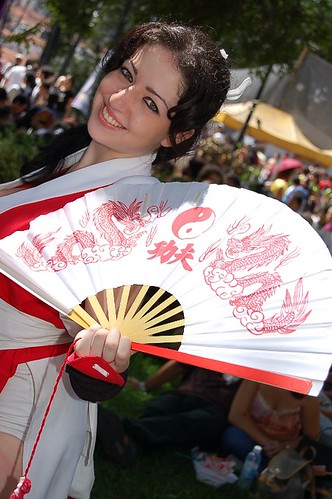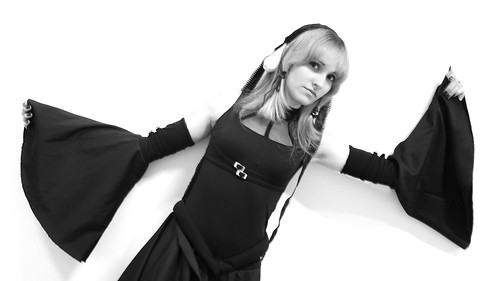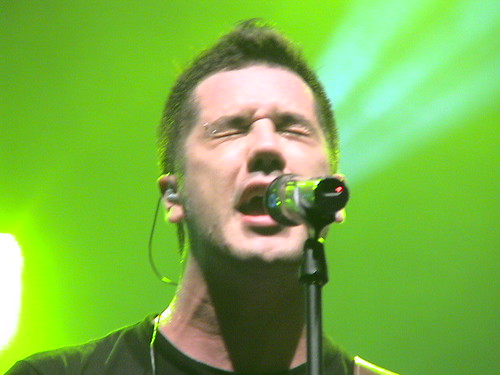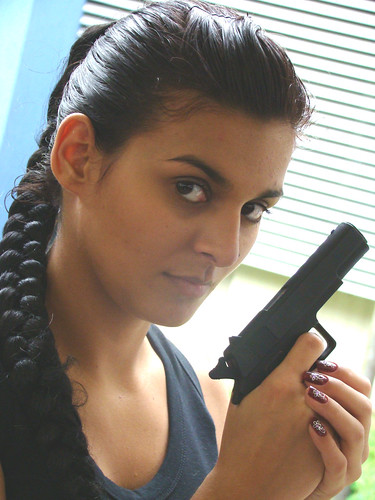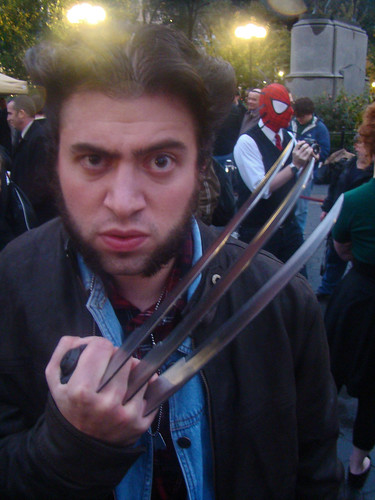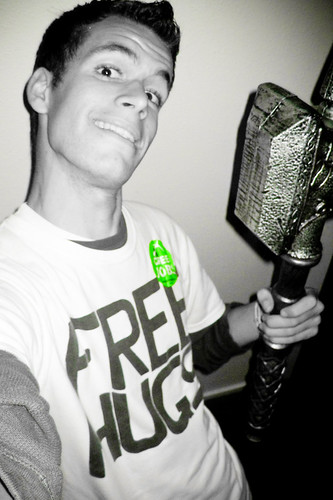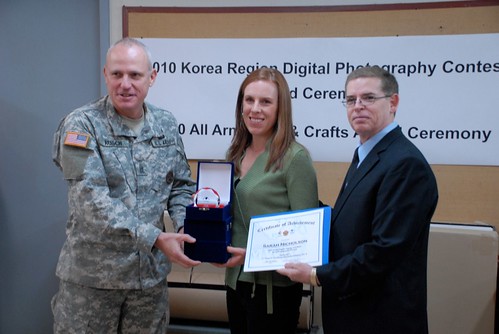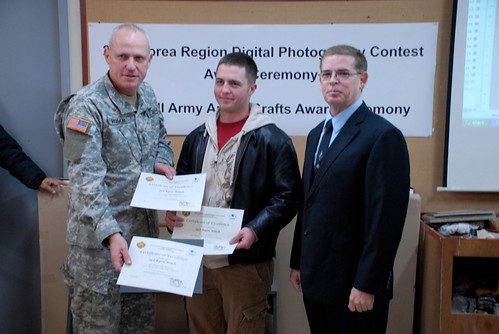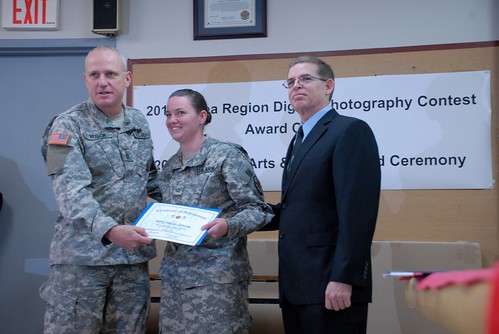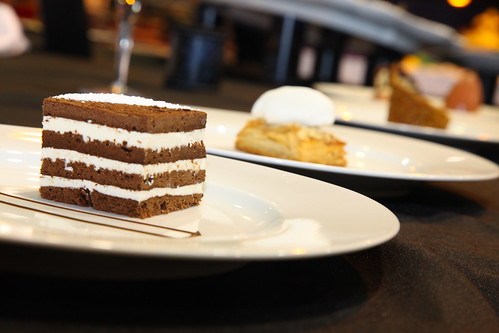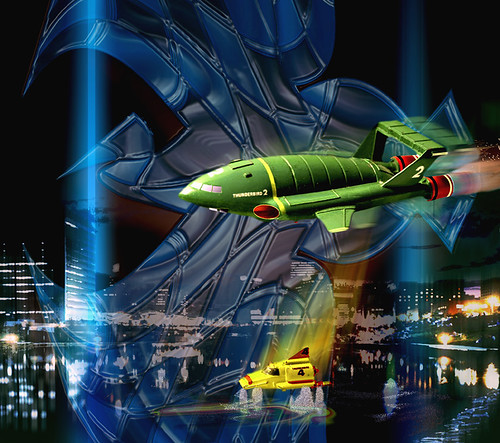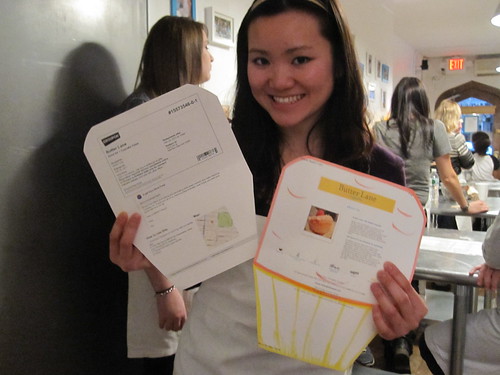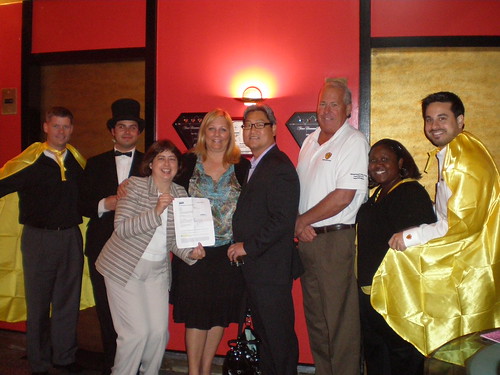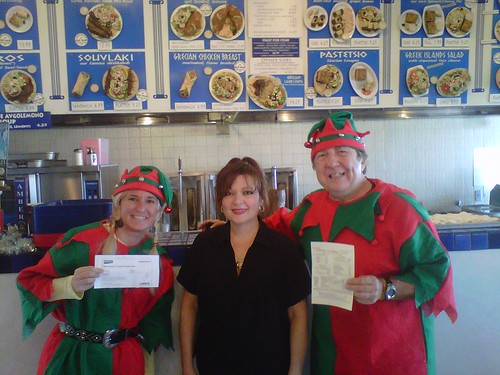Steven F. Udvar-Hazy Center: South hangar panorama, including De Havilland Canada DHC-1A Chipmunk Pennzoil Special, Loudenslager Laser 200, and Air France Concorde
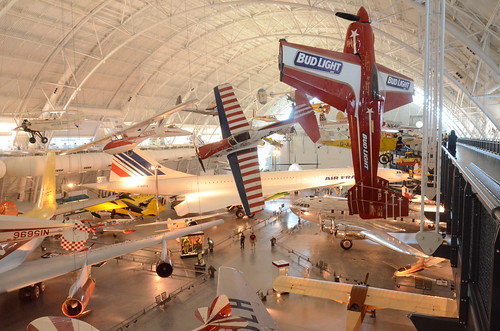
Image by Chris Devers
Quoting Smithsonian National Air and Space Museum | Loudenslager Laser 200
"Beautiful Obsession":
With the Laser 200, Leo Loudenslager won an unprecedented seven U.S. National Aerobatic Championship titles between 1975 and '82, as well as the 1980 World Champion title. The airplane originated as a Stephens Akro, a sleed aeroback design, but by 1975 Loudenslager had completely modified the airplane with a new forward fuselage, wings, tail, and cockpit. The Laser 200 emerged as a lighter, stronger, and more powerful aircraft, enabling Loudenslager to perform sharper and more difficult maneuvers.
Loudenslager's legacy is evident in the tumbling and twisting but precise routines flown by current champions and airshow pilots. The Laser 200 heavily influenced the look and performance of the next generation of aerobatic aircraft, including the Extra, which dominated competition throughout the 1990s.
Gift of Carolyn and Kelly Loudenslager
Manufacturer:
Leo Loudenslager
Date:
1975-1998
Country of Origin:
United States of America
Dimensions:
Wingspan: 8 m (26 ft 2 in)
Length: 5.5 m (18 ft 8 in)
Height: 1.6 m (5 ft 5 in)
Weight, empty: 400 kg (885lb)
Top speed: 370km/h (230 mph)
Engine: Lycoming IO-360-A1A, 200 hp
Materials:
Fuselage: steel tube with Ceconite cover aft
Wings: one piece, wooden spars Physical Description:N-10LL. Mid-wing aerobatic monoplane, red with white shooting stars. Built and flown by aerobatic champion and airshow pilot Leo Loudenslager.
Engine: Lycoming IO-360-AIA, 200 hp
MT propeller, MTV-2B-C/193-02. Serial number 88 069
• • • • •
Quoting Smithsonian National Air and Space Museum | De Havilland-Canada DHC-1A Chipmunk, Pennzoil Special:
De Havilland originally designed the Chipmunk after World War II as a primary trainer to replace the venerable Tiger Moth. Among the tens of thousands of pilots who trained in or flew the Chipmunk for pleasure was veteran aerobatic and movie pilot Art Scholl. He flew his Pennzoil Special at air shows throughout the 1970s and early '80s, thrilling audiences with his skill and showmanship and proving that the design was a top-notch aerobatic aircraft.
Art Scholl purchased the DHC-1A in 1968. He modified it to a single-seat airplane with a shorter wingspan and larger vertical fin and rudder, and made other changes to improve its performance. Scholl was a three-time member of the U.S. Aerobatic Team, an air racer, and a movie and television stunt pilot. At air shows, he often flew with his dog Aileron on his shoulder or taxied with him standing on the wing.
Gift of the Estate of Arthur E. Scholl
Manufacturer:
De Havilland Canada Ltd.
Pilot:
Art Scholl
Date:
1946
Country of Origin:
United States of America
Dimensions:
Wingspan: 9.4 m (31 ft)
Length: 7.9 m (26 ft)
Height: 2.1 m (7 ft 1 in)
Weight, empty: 717 kg (1,583 lb)
Weight, gross: 906 kg (2,000 lb)
Top speed: 265 km/h (165 mph)
Engine: Lycoming GO-435, 260 hp
Materials:
Overall: Aluminum Monocoque Physical Description:Single-engine monoplane. Lycoming GO-435, 260 hp engine.
• • • • •
Quoting Smithsonian National Air and Space Museum | Concorde, Fox Alpha, Air France:
The first supersonic airliner to enter service, the Concorde flew thousands of passengers across the Atlantic at twice the speed of sound for over 25 years. Designed and built by Aérospatiale of France and the British Aviation Corporation, the graceful Concorde was a stunning technological achievement that could not overcome serious economic problems.
In 1976 Air France and British Airways jointly inaugurated Concorde service to destinations around the globe. Carrying up to 100 passengers in great comfort, the Concorde catered to first class passengers for whom speed was critical. It could cross the Atlantic in fewer than four hours - half the time of a conventional jet airliner. However its high operating costs resulted in very high fares that limited the number of passengers who could afford to fly it. These problems and a shrinking market eventually forced the reduction of service until all Concordes were retired in 2003.
In 1989, Air France signed a letter of agreement to donate a Concorde to the National Air and Space Museum upon the aircraft's retirement. On June 12, 2003, Air France honored that agreement, donating Concorde F-BVFA to the Museum upon the completion of its last flight. This aircraft was the first Air France Concorde to open service to Rio de Janeiro, Washington, D.C., and New York and had flown 17,824 hours.
Gift of Air France.
Manufacturer:
Societe Nationale Industrielle Aerospatiale
British Aircraft Corporation
Dimensions:
Wingspan: 25.56 m (83 ft 10 in)
Length: 61.66 m (202 ft 3 in)
Height: 11.3 m (37 ft 1 in)
Weight, empty: 79,265 kg (174,750 lb)
Weight, gross: 181,435 kg (400,000 lb)
Top speed: 2,179 km/h (1350 mph)
Engine: Four Rolls-Royce/SNECMA Olympus 593 Mk 602, 17,259 kg (38,050 lb) thrust each
Manufacturer: Société Nationale Industrielle Aérospatiale, Paris, France, and British Aircraft Corporation, London, United Kingdom
Physical Description:
Aircaft Serial Number: 205. Including four (4) engines, bearing respectively the serial number: CBE066, CBE062, CBE086 and CBE085.
Also included, aircraft plaque: "AIR FRANCE Lorsque viendra le jour d'exposer Concorde dans un musee, la Smithsonian Institution a dores et deja choisi, pour le Musee de l'Air et de l'Espace de Washington, un appariel portant le couleurs d'Air France."
Steven F. Udvar-Hazy Center: P-40 Warhawk with "sharktooth" nose

Image by Chris Devers
See more photos of this, and the Wikipedia article.
Details, quoting from Smithsonian National Air and Space Museum | Curtiss P-40E Warhawk (Kittyhawk IA):
Whether known as the Warhawk, Tomahawk, or Kittyhawk, the Curtiss P-40 proved to be a successful, versatile fighter during the first half of World War II. The shark-mouthed Tomahawks that Gen. Claire Chennault's "Flying Tigers" flew in China against the Japanese remain among the most popular airplanes of the war. P-40E pilot Lt. Boyd D. Wagner became the first American ace of World War II when he shot down six Japanese aircraft in the Philippines in mid-December 1941.
Curtiss-Wright built this airplane as Model 87-A3 and delivered it to Canada as a Kittyhawk I in 1941. It served until 1946 in No. 111 Squadron, Royal Canadian Air Force. U.S. Air Force personnel at Andrews Air Force Base restored it in 1975 to represent an aircraft of the 75th Fighter Squadron, 23rd Fighter Group, 14th Air Force.
Donated by the Exchange Club in Memory of Kellis Forbes.
Manufacturer:
Curtiss Aircraft Company
Date:
1939
Country of Origin:
United States of America
Dimensions:
Overall: 330 x 970cm, 2686kg, 1140cm (10ft 9 15/16in. x 31ft 9 7/8in., 5921.6lb., 37ft 4 13/16in.)
Materials:
All-metal, semi-monocoque
Physical Description:
Single engine, single seat, fighter aircraft.
Long Description:
Whether it was the Tomahawk, Warhawk, or Kittyhawk, the Curtiss P-40 was a successful and versatile fighter aircraft during the first half of World War II. The shark-mouthed Tomahawks that General Claire Chennault led against the Japanese remain among the most popular airplanes of the war. In the Phillipines, Lt. Boyd D. Wagner became the first American ace of World War II while flying a P-40E when he shot down six Japanese aircraft during mid-December 1941. P-40s were first-line Army Air Corps fighters at the start of the war but they soon gave way to more advanced designs such as the Republic P-47 Thunderbolt and the Lockheed P-38 Lightning (see NASM collection for both aircraft). The P-40 is not ranked among the best overall fighters of the war but it was a rugged, effective design available in large numbers early in the war when America and her allies urgently required them. The P-40 remained in production from 1939 to the end of 1944 and a total of 13, 737 were built.
Design engineer Dr. Donovan R. Berlin layed the foundation for the P-40 in 1935 when he designed the agile, but lightly-armed, P-36 fighter equipped with a radial, air-cooled engine. The Curtiss-Wright Corporation won a production contract for 210 P-36 airplanes in 1937-the largest Army airplane contract awarded since World War I. Worldwide, fighter aircraft designs matured rapidly during the late 1930s and it was soon obvious that the P-36 was no match for newer European designs. High altitude performance in particular became a priceless commodity. Berlin attempted to improve the P-36 by redesigning it in to accommodate a turbo-supercharged Allison V-1710-11 inline, liquid-cooled engine. The new aircraft was designated the XP-37 but proved unpopular with pilots. The turbo-supercharger was not reliable and Berlin had placed the cockpit too far back on the fuselage, restricting the view to the front of the fighter. Nonetheless, when the engine was not giving trouble, the more-streamlined XP-37 was much faster than the P-36.
Curtiss tried again in 1938. Berlin had modified another P-36 with a new Allison V-1710-19 engine. It was designated the XP-40 and first flew on October 14, 1938. The XP-40 looked promising and Curtiss offered it to Army Air Corps leaders who evaluated the airplane at Wright Field, Ohio, in 1939, along with several other fighter proposals. The P-40 won the competition, after some modifications, and Curtiss received an order for 540. At this time, the armament package consisted of two .50 caliber machine guns in the fuselage and four .30 caliber machine guns in the wings.
After production began in March 1940, France ordered 140 P-40s but the British took delivery of these airplanes when Paris surrendered. The British named the aircraft Tomahawks but found they performed poorly in high-altitude combat over northern Europe and relegated them to low-altitude operations in North Africa. The Russians bought more than 2,000 P-40s but details of their operational history remain obscure.
When the United States declared war, P-40s equipped many of the Army Air Corps's front line fighter units. The plucky fighter eventually saw combat in almost every theater of operations being the most effective in the China-Burma-India (CBI) Theater. Of all the CBI groups that gained the most notoriety of the entire war, and remains to this day synonymous with the P-40, is the American Volunteer Group (AVG) or the Flying Tigers. The unit was organized after the Chinese gave former U. S. Army Air Corps Captain Claire Lee Chennault almost 9 million dollars in 1940 to buy aircraft and recruit pilots to fly against the Japanese. Chennault's most important support within the Chinese government came from Madam Chiang Kai-shek, a Lt. Colonel in the Chinese Air Force and for a time, the service's overall commander.
The money from China diverted an order placed by the British Royal Air Force for 100 Curtiss-Wright P-40B Tomahawks but buying airplanes was only one important step in creating a fighting air unit. Trained pilots were needed, and quickly, as tensions across the Pacific escalated. On April 15, 1941, President Franklin D. Roosevelt quietly signed an Executive Order permitting Chennault to recruit directly from the ranks of American military reserve pilots. Within a few months, 350 flyers joined from pursuit (fighter), bomber, and patrol squadrons. In all, about half the pilots in the Flying Tigers came from the U. S. Navy and Marine Corps while the Army Air Corps supplied one-third. Factory test pilots at Bell, Consolidated, and other companies, and commercial airline pilots, filled the remaining slots.
The Flying Tigers flew their first mission on December 20. The unit's name was derived from the ferocious fangs and teeth painted on the nose of AVG P-40s at either side of the distinctive, large radiator air intake. The idea is said to originate from pictures in a magazine that showed Royal Air Force Tomahawks of No. 112 Squadron, operating in the western desert of North Africa, adorned with fangs and teeth painted around their air intakes. The Flying Tigers were the first real opposition the Japanese military encountered. In less than 7 months of action, AVG pilots destroyed about 115 Japanese aircraft and lost only 11 planes in air-to-air combat. The AVG disbanded on July 4, 1942, and its assets, including a few pilots, became a part of the U. S. Army Air Forces (AAF) 23rd Fighter Group in the newly activated 14th Air Force. Chennault, now a Brigadier General, assumed command of the 14th AF and by war's end, the 23rd was one of the highest-scoring Army fighter groups.
As wartime experience in the P-40 mounted, Curtiss made many modifications. Engineers added armor plate, better self-sealing fuel tanks, and more powerful engines. They modified the cockpit to improve visibility and changed the armament package to six, wing-mounted, .50 caliber machine guns. The P-40E Kittyhawk was the first model with this gun package and it entered service in time to serve in the AVG. The last model produced in quantity was the P-40N, the lightest P-40 built in quantity, and much faster than previous models. Curtiss built a single P-40Q. It was the fastest P-40 to fly (679 kph/422 mph) but it could not match the performance of the P-47 Thunderbolt and the P-51 Mustang so Curtiss ended development of the P-40 series with this model. In addition to the AAF, many Allied nations bought and flew P-40s including England, France, China, Russia, Australia, New Zealand, Canada, South Africa, and Turkey.
The Smithsonian P-40E did not serve in the U. S. military. Curtiss-Wright built it in Buffalo, New York, as Model 87-A3 and delivered it to Canada as a Kittyhawk IA on March 11, 1941. It served in No. 111 Squadron, Royal Canadian Air Force (RCAF). When the Japanese navy moved to attack Midway, they sent a diversionary battle group to menace the Aleutian Islands. Canada moved No. 111 Squadron to Alaska to help defend the region. After the Japanese threat diminished, the unit returned to Canada and eventually transferred to England without its P-40s. The RCAF declared the NASM Kittyhawk IA surplus on July 27, 1946, and the aircraft eventually returned to the United States. It had several owners before ending up with the Explorer Scouts youth group in Meridian, Mississippi. During the early 1960s, the Smithsonian began searching for a P-40 with a documented history of service in the AVG but found none. In 1964, the Exchange Club in Meridian donated the Kittyhawk IA to the National Aeronautical Collection, in memory of Mr. Kellis Forbes, a local man devoted to Boys Club activities. A U. S. Air Force Reserve crew airlifted the fighter to Andrews Air Force Base, Maryland, on March 13, 1964. Andrews personnel restored the airplane in 1975 and painted it to represent an aircraft of the 75th Fighter Squadron, 23rd Fighter Group, 14th Air Force.
• • •
Quoting from Wikipedia | Curtiss P-40 Warhawk:
The Curtiss P-40 Warhawk was an American single-engine, single-seat, all-metal fighter and ground attack aircraft that first flew in 1938. It was used by the air forces of 28 nations, including those of most Allied powers during World War II, and remained in front line service until the end of the war. It was the third most-produced American fighter, after the P-51 and P-47; by November 1944, when production of the P-40 ceased, 13,738 had been built, all at Curtiss-Wright Corporation's main production facility at Buffalo, New York.
The P-40 design was a modification of the previous Curtiss P-36; this reduced development time and enabled a rapid entry into production and operational service.
Warhawk was the name the United States Army Air Corps adopted for all models, making it the official name in the United States for all P-40s. The British Commonwealth and Soviet air forces used the name Tomahawk for models equivalent to the P-40B and P-40C, and the name Kittyhawk for models equivalent to the P-40D and all later variants.
The P-40's lack of a two-stage supercharger made it inferior to Luftwaffe fighters such as the Messerschmitt Bf 109 or the Focke-Wulf Fw 190 in high-altitude combat and it was rarely used in operations in Northwest Europe. Between 1941 and 1944, however, the P-40 played a critical role with Allied air forces in three major theaters: North Africa, the Southwest Pacific and China. It also had a significant role in the Middle East, Southeast Asia, Eastern Europe, Alaska and Italy. The P-40's performance at high altitudes was not as critical in those theaters, where it served as an air superiority fighter, bomber escort and fighter bomber.
P-40s first saw combat with the British Commonwealth squadrons of the Desert Air Force (DAF) in the Middle East and North African campaigns, during June 1941. The Royal Air Force's No. 112 Squadron was among the first to operate Tomahawks, in North Africa, and the unit was the first to feature the "shark mouth" logo, copying similar markings on some Luftwaffe Messerschmitt Bf 110 twin-engine fighters. [N 1]
Although it gained a post-war reputation as a mediocre design, suitable only for close air support, more recent research including scrutiny of the records of individual Allied squadrons indicates that the P-40 performed surprisingly well as an air superiority fighter, at times suffering severe losses, but also taking a very heavy toll on enemy aircraft. The P-40 offered the additional advantage of low cost, which kept it in production as a ground-attack fighter long after it was obsolete in the air superiority role.
As of 2008, 19 P-40s were airworthy.
• • • • •
See more photos of this, and the Wikipedia article.
Details, quoting from Smithsonian National Air and Space Museum | Space Shuttle Enterprise:
Manufacturer:
Rockwell International Corporation
Country of Origin:
United States of America
Dimensions:
Overall: 57 ft. tall x 122 ft. long x 78 ft. wing span, 150,000 lb.
(1737.36 x 3718.57 x 2377.44cm, 68039.6kg)
Materials:
Aluminum airframe and body with some fiberglass features; payload bay doors are graphite epoxy composite; thermal tiles are simulated (polyurethane foam) except for test samples of actual tiles and thermal blankets.
The first Space Shuttle orbiter, "Enterprise," is a full-scale test vehicle used for flights in the atmosphere and tests on the ground; it is not equipped for spaceflight. Although the airframe and flight control elements are like those of the Shuttles flown in space, this vehicle has no propulsion system and only simulated thermal tiles because these features were not needed for atmospheric and ground tests. "Enterprise" was rolled out at Rockwell International's assembly facility in Palmdale, California, in 1976. In 1977, it entered service for a nine-month-long approach-and-landing test flight program. Thereafter it was used for vibration tests and fit checks at NASA centers, and it also appeared in the 1983 Paris Air Show and the 1984 World's Fair in New Orleans. In 1985, NASA transferred "Enterprise" to the Smithsonian Institution's National Air and Space Museum.
Transferred from National Aeronautics and Space Administration
Steven F. Udvar-Hazy Center: Profile view of the SR-71 Blackbird, F-4 Corsair, Peashooter, among others
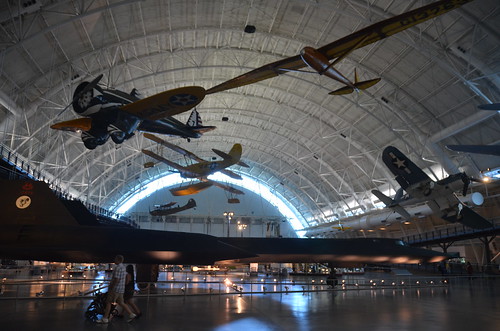
Image by Chris Devers
Quoting Smithsonian National Air and Space Museum | Lockheed SR-71 Blackbird:
No reconnaissance aircraft in history has operated globally in more hostile airspace or with such complete impunity than the SR-71, the world's fastest jet-propelled aircraft. The Blackbird's performance and operational achievements placed it at the pinnacle of aviation technology developments during the Cold War.
This Blackbird accrued about 2,800 hours of flight time during 24 years of active service with the U.S. Air Force. On its last flight, March 6, 1990, Lt. Col. Ed Yielding and Lt. Col. Joseph Vida set a speed record by flying from Los Angeles to Washington, D.C., in 1 hour, 4 minutes, and 20 seconds, averaging 3,418 kilometers (2,124 miles) per hour. At the flight's conclusion, they landed at Washington-Dulles International Airport and turned the airplane over to the Smithsonian.
Transferred from the United States Air Force.
Manufacturer:
Lockheed Aircraft Corporation
Designer:
Clarence L. "Kelly" Johnson
Date:
1964
Country of Origin:
United States of America
Dimensions:
Overall: 18ft 5 15/16in. x 55ft 7in. x 107ft 5in., 169998.5lb. (5.638m x 16.942m x 32.741m, 77110.8kg)
Other: 18ft 5 15/16in. x 107ft 5in. x 55ft 7in. (5.638m x 32.741m x 16.942m)
Materials:
Titanium
Physical Description:
Twin-engine, two-seat, supersonic strategic reconnaissance aircraft; airframe constructed largley of titanium and its alloys; vertical tail fins are constructed of a composite (laminated plastic-type material) to reduce radar cross-section; Pratt and Whitney J58 (JT11D-20B) turbojet engines feature large inlet shock cones.
• • • • •
Quoting Smithsonian National Air and Space Museum | Boeing P-26A Peashooter :
The Boeing P-26A of the mid-to-late 1930s introduced the concept of the high-performance, all-metal monoplane fighter design, which would become standard during World War II. A radical departure from wood-and-fabric biplanes, the Peashooter nonetheless retained an open cockpit, fixed landing gear, and external wing bracing.
Most P-26As stationed overseas were eventually sold to the Philippines or assigned to the Panama Canal Department Air Force, a branch of the U.S. Army Air Corps. Several went to China and one to Spain. This one was based at Selfridge Field in Michigan and Fairfield Air Depot in Ohio between its acceptance by the U.S. Army Air Corps in 1934 and its transfer to the Canal Zone in 1938. It was given to Guatemala in 1942 and flew in the Guatemalan air force until 1954. Guatemala donated it to the Smithsonian in 1957.
Gift of the Guatemalan Air Force, Republic of Guatemala
Manufacturer:
Boeing Aircraft Co.
Date:
1934
Country of Origin:
United States of America
Dimensions:
Wingspan: 8.5 m (27 ft 11 in)
Length:7.3 m (23 ft 11 in)
Height:3.1 m (10 ft 2 in)
Weight, empty:996 kg (2,196 lb)
Weight, gross:1,334 kg (2,935 lb)
Top speed:377 km/h (234 mph)
Engine:Pratt & Whitney R-1340-27, 600 hp
Armament:two .30 cal. M2 Browning aircraft machine guns
• • • • •
Quoting Smithsonian National Air and Space Museum | Vought F4U-1D Corsair :
By V-J Day, September 2, 1945, Corsair pilots had amassed an 11:1 kill ratio against enemy aircraft. The aircraft's distinctive inverted gull-wing design allowed ground clearance for the huge, three-bladed Hamilton Standard Hydromatic propeller, which spanned more than 4 meters (13 feet). The Pratt and Whitney R-2800 radial engine and Hydromatic propeller was the largest and one of the most powerful engine-propeller combinations ever flown on a fighter aircraft.
Charles Lindbergh flew bombing missions in a Corsair with Marine Air Group 31 against Japanese strongholds in the Pacific in 1944. This airplane is painted in the colors and markings of the Corsair Sun Setter, a Marine close-support fighter assigned to the USS Essex in July 1944.
Transferred from the United States Navy.
Manufacturer:
Vought Aircraft Company
Date:
1940
Country of Origin:
United States of America
Dimensions:
Overall: 460 x 1020cm, 4037kg, 1250cm (15ft 1 1/8in. x 33ft 5 9/16in., 8900lb., 41ft 1/8in.)
Materials:
All metal with fabric-covered wings behind the main spar.
Physical Description:
R-2800 radial air-cooled engine with 1,850 horsepower, turned a three-blade Hamilton Standard Hydromatic propeller with solid aluminum blades spanning 13 feet 1 inch; wing bent gull-shaped on both sides of the fuselage.
